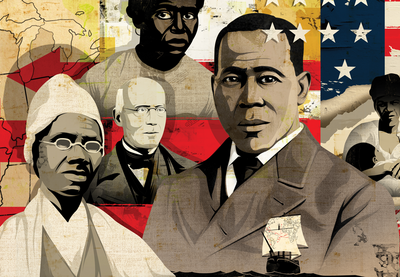Slavery in all the places that are now the United States began with the enslavement of Indigenous people.
What Else Should My Students Know?
12.A Before the European invasion, many Native nations practiced slavery, mostly as captivity after warfare.
12.B Europeans dramatically increased the scope and nature of Indigenous slavery.
12.C Europeans enslaved between 2.5 million and 5 million Indigenous people throughout the Americas. Many were sold globally for enslavement elsewhere. Most enslaved Indigenous people were women and children.
12.D White people’s enslavement of Indigenous people—part of the exploitation of Indigenous labor and the theft of Indigenous land—adversely affected every community that it touched.
How Can I Teach This?
- Compare historical and contemporary maps of Native nations. Students should identify different communities and map the ways that their boundaries and locations have changed.
- Many students may be surprised to learn about the extent of Indigenous slavery. Encourage students to critically examine textbook representations and popular stories about enslavers such as Columbus and Ponce de León.
- Students should know that people in all American colonies practiced slavery. By mapping the geography and economies of different parts of the colonies, students can learn that enslaved people performed different kinds of labor depending on their location—although most enslaved people in what is now the United States lived in and worked for households.
- Use learning about the enslavement of Indigenous peoples to go beyond the common “North-South” divide. For example, students can learn about enslavement in western territories such as California, New Mexico and Utah. Here, most enslaved people were Indigenous people forced to labor in a variety of places, including mines, farms, ranches, households and small businesses.
- Students should learn that colonial enslavement of Indigenous people was integral to colonization, settlement and western expansion into the modern era. There are many examples that will engage students for illustration, such as the California Gold Rush, the Plains Wars of the 1870s, the Southwestern wars against the Utes and Navajo, and the Mormon settlement of Utah.

